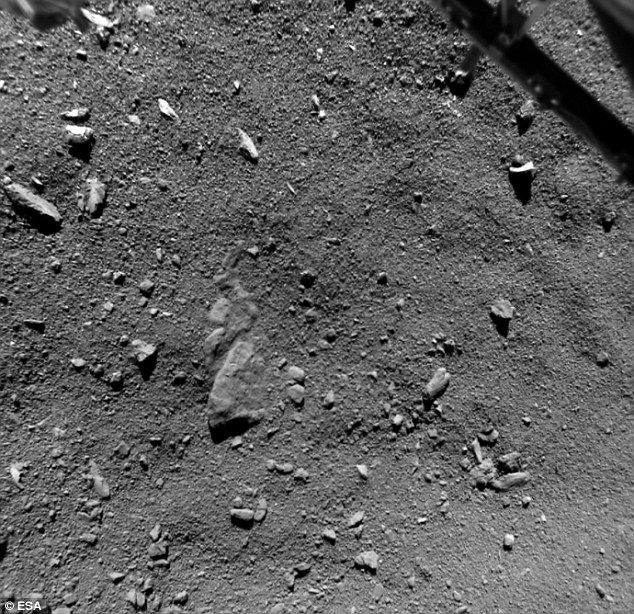
The images document the probe's fall, and could even reveal where it finally took up residence after a bumpy landing last November.
Researchers believe there is even evidence that the comet-lander dropped into a hole about its own size just three feet (0.9 metres) away from a towering cliff.
Newly published data from the mission shows that the craft was also surrounded by boulders up to a metre wide and came to rest with one of its three feet pointing up.
Data collected during its landing has also just been released, revealed a 'rich variety' or organic material that could be the seeds for life on other planets.
In June, scientists announced that the craft had woken up from hibernation, seven months after bouncing dramatically on to the surface of 67P/Churyumov-Gerasimenko.
Standing in partial shadow, the washing machine-sized probe couldn't keep itself warm or generate sufficient electricity from its solar panels, and shut down.
More light was thought to be reaching its solar panels as the comet travelled closer to the sun.
Experts analysing a wealth of information from Philae have reported some of their first results in the latest issue of the journal Science.
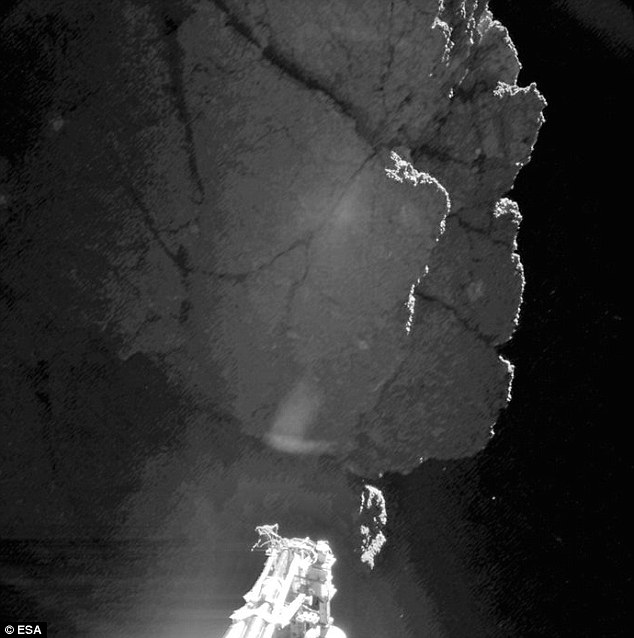
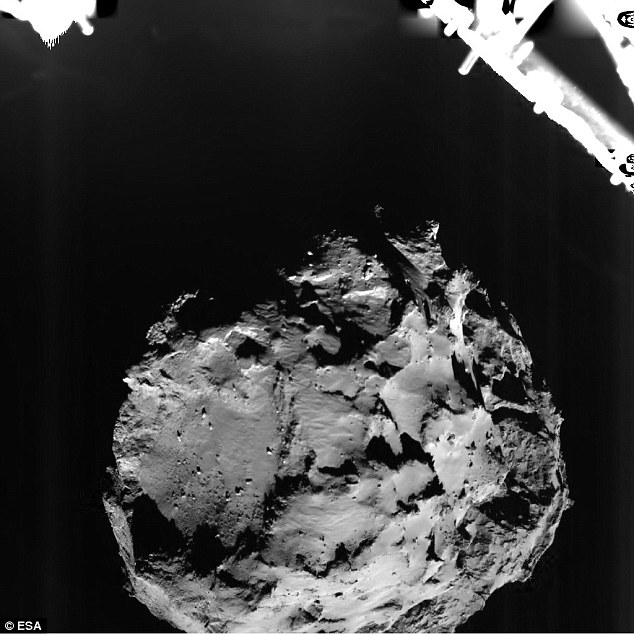
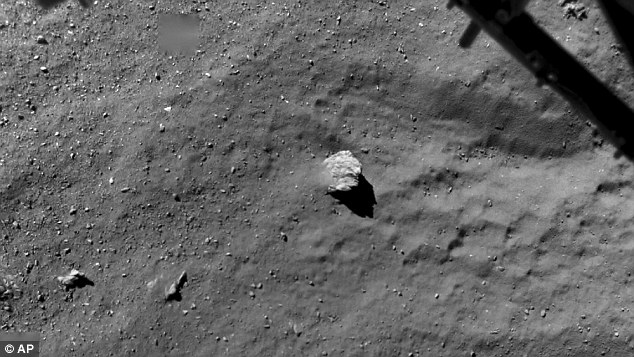
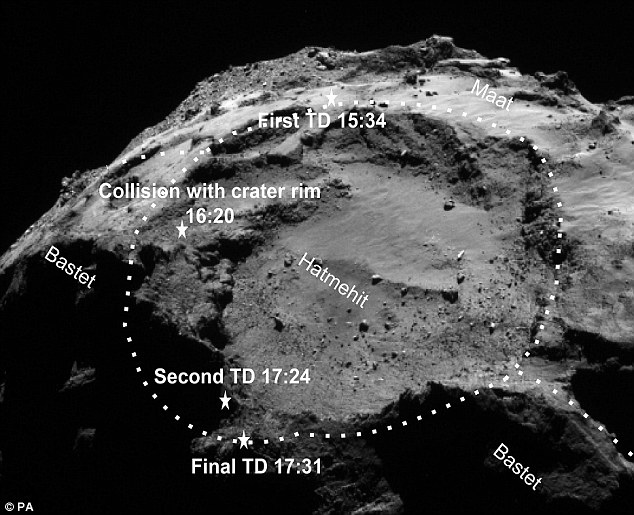
One paper, based on analysis of images taken by the probe's seven cameras.
It provides more detail about what happened when the craft landed after leaving the orbiting Rosetta mothership on November 12.
Others describe organic compounds detected by Philae, including four never before identified on a comet, but nothing clearly defined as a building block of life.
Philae did not stay long at its intended landing site, a soft granular surface about a foot deep with a harder layer below.
Instead it bounced twice, finally coming to rest in a different location more than half a mile away.
The image team, led by Dr Jean-Pierre Bibring, from the Universite Paris-Sud in France, described how Philae seemed to be 'in a hole about its own size, partially shadowed by nearby boulders or cliffs'.
One foot was probably stuck in a 'local cavity', another rested on a sun-lit surface, and the third was 'pointing upward'.
The researchers added: 'The landing site is dominated by metre-scale blocks, with a large elongated cliff, starting around one metre away.
'These large structures are responsible for Philae being partially shadowed, drastically limiting its energy intake for both warming up the internal compartment and supplying the solar panels.'
German-led scientists in charge of an instrument called Cosac (Cometary Sampling and Composition) reported the collection of organic molecules from six miles above the comet's surface, after initial touchdown, and at the final landing site.
ROSETTA: THE STORY SO FAR
The Rosetta probe, which was carrying Philae, launched into space in 2004, using the gravity of Earth and Mars to slingshot its way towards comet 67P/Churyumov-Gerasimenko.
It chased the comet through space for more than ten years, entering orbit in August 2014.
After a four-billion-mile (6.4 billion km) journey, the probe then successfully released the Philae lander from its grip to land on the comet on 12 November 2014, travelling at 3.3ft (one metre) a second relative to the comet.
But when it first made contact with the surface it failed to fire harpoons that would have kept it attached to the comet.
This resulted in it bouncing to a height of 0.62 miles (1km) above the comet before again landing on the surface. It then bounced again, but to a much lower altitude.
Philae managed to perform more than 90 per cent of its goals before running out of power. Rosetta, meanwhile, is continuing to orbit and study the comet.
From data collected by the two probes, Esa said that water on the comet was different to that on Earth - suggesting water on our world came from an asteroid, not a comet.
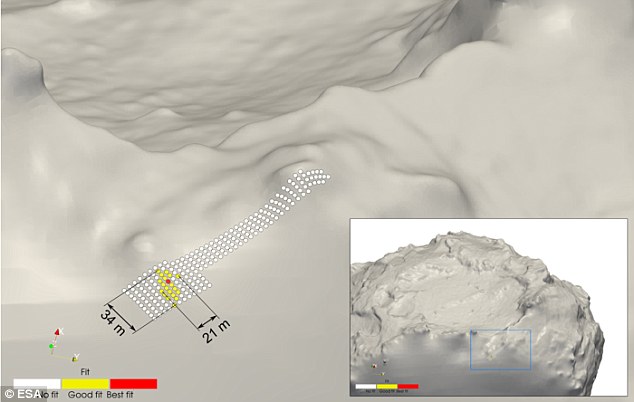
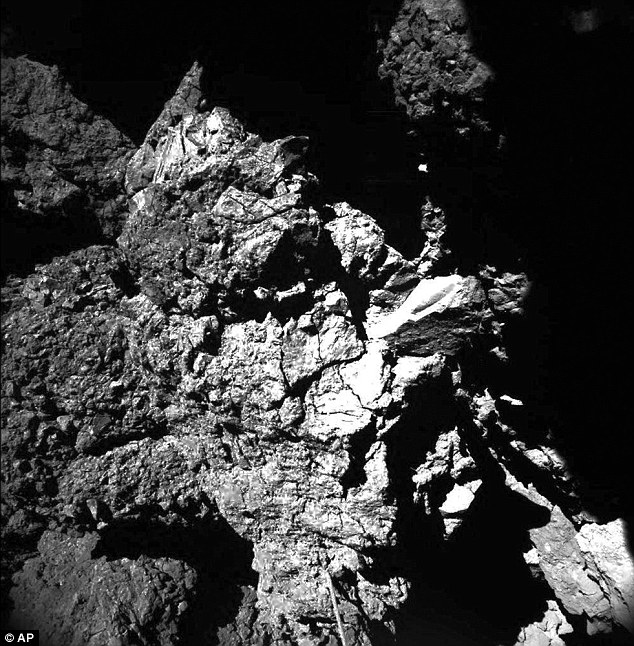
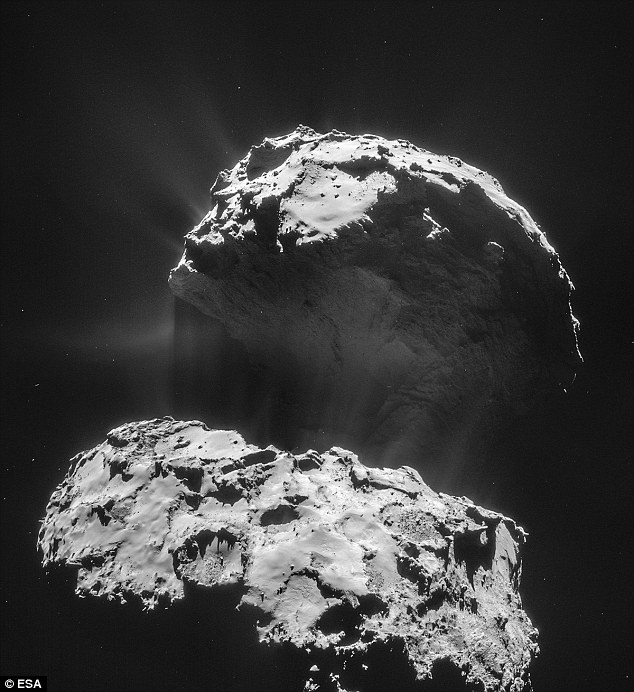
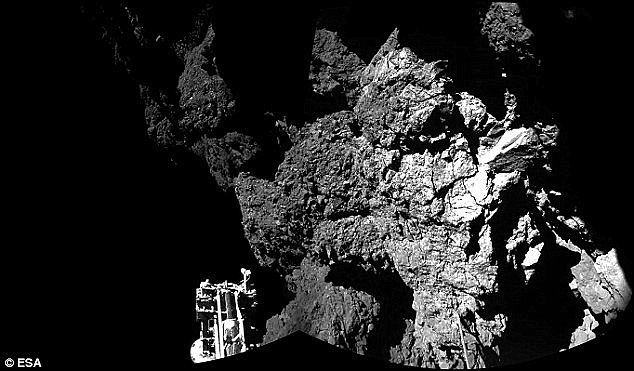
A shoe-box sized gas-sniffing instrument called Ptolemy, operated by a British team led by Professor Ian Wright, from the Open University, also analysed organic compounds.
It indicated the presence of a polyoxymethylene (POM), an organic polymer, or chained compound, on the comet surface.
POM has been suggested as playing a key role in prebiotic chemistry.
Electromagnetic signals fired through the centre of the comet also showed the object had a uniform structure that was highly porous.
But so far Philae has produced no evidence of amino acids, which chain together to form proteins, the building blocks of life.
Many experts believe comets carried the raw ingredients of life to Earth and other planets in the solar system.
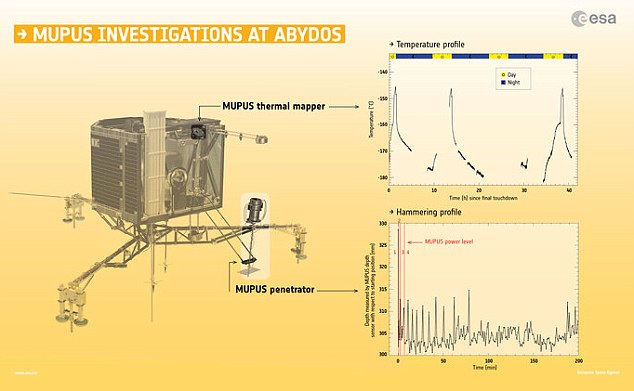
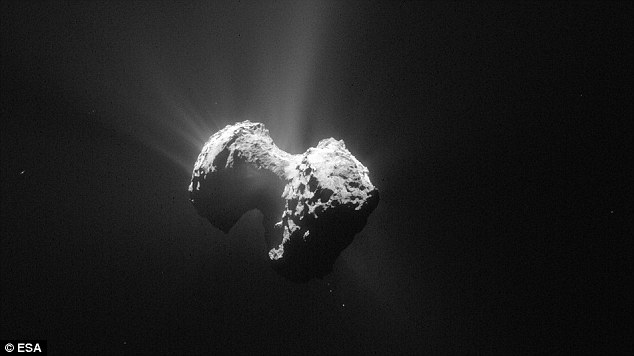
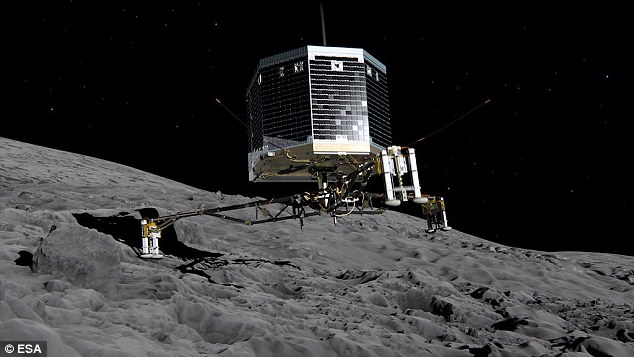



I see one of my ancestors on that thing!